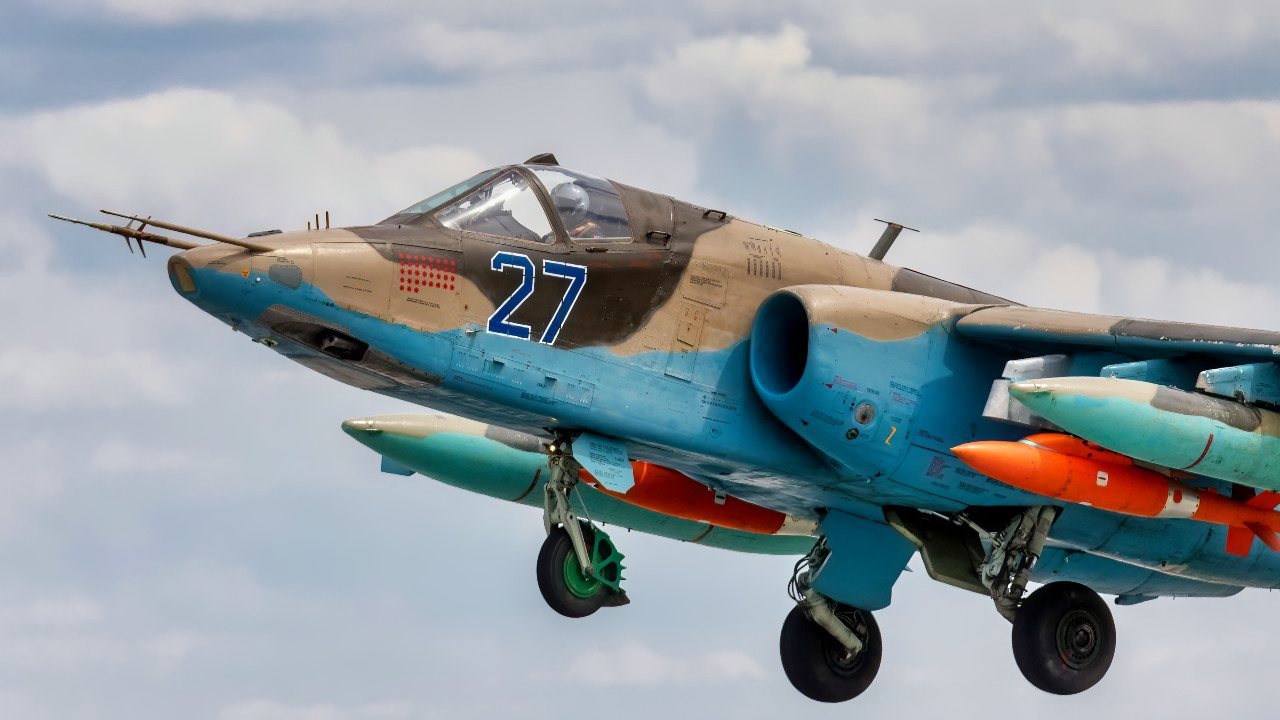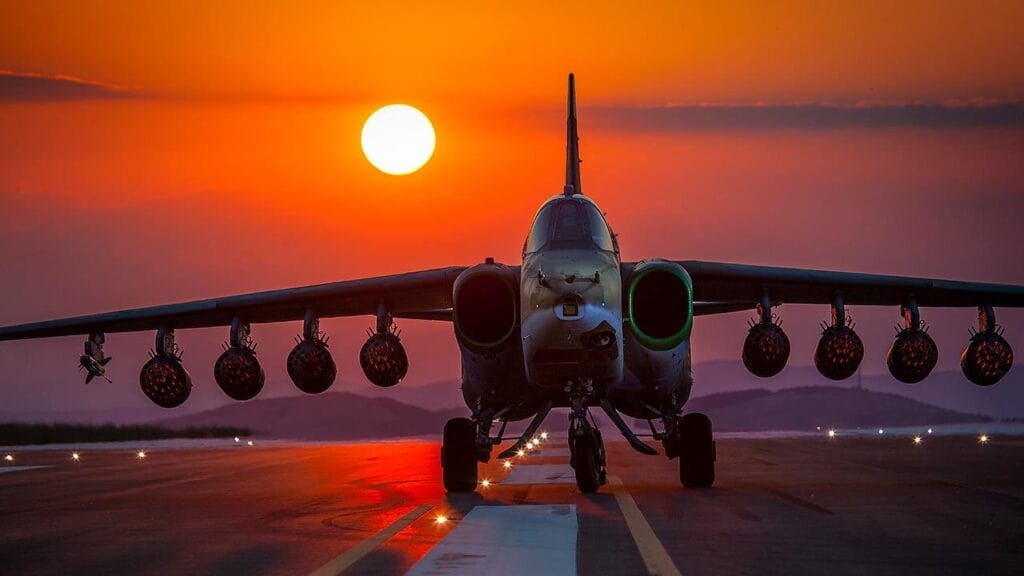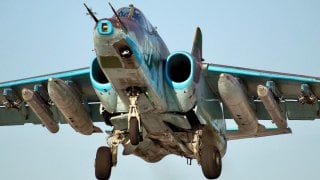Russia's Su-25 Flying Tank Nightmare Is Real
The Su-25 "Frogfoot," or "Grach," is a subsonic, single-seat, twin-engine jet designed by the Sukhoi Design Bureau during the Soviet era. So far, in the Ukraine war, it has had a tough time.
Summary: The Su-25 "Frogfoot," or "Grach," is a subsonic, single-seat, twin-engine jet designed by the Sukhoi Design Bureau during the Soviet era.

-It is Russia's counterpart to the American A-10 Warthog, intended for close air support (CAS). However, it is less effective in combat due to its inferior armor and conventional 30mm cannon, which depletes ammunition quickly.
-The Su-25's combat performance has been mixed, performing poorly in conflicts such as the Soviet-Afghan War and the Syrian Civil War.
-The aging fleet and lack of significant upgrades have rendered it less effective in modern combat, as seen in the ongoing Ukraine war, where several Su-25s have been downed by Ukrainian defenses.
Su-25 Frogfoot: Russia's Struggling Close Air Support Jet
The Su-25, fondly known as the “Frogfoot” by its Russian pilots and “Grach” or “rook” by its official name, is a subsonic, single-seat, twin-engine jet warplane that was built by the Sukhoi Design Bureau Joint Stock Company in the Soviet era. It’s the Russian version of the A-10 Warthog, a close air support (CAS) system, but it’s nowhere near as effective in combat as the A-10.
The Frogfoot, like its American counterpart, is a flying tank. Although it has less armor and a bit more speed than the A-10. The Su-25 can climb at the rate of 58m/s and has a maximum speed of about 590 miles per hour. This warbird is by no means the fastest plane in the pack.
But it goes fast enough to allow it to accomplish its CAS mission sets.
Some Specs on the Su-25 Flying Tank
Armed with a Gsh-30-2 30-millimeter cannon under its nose, which can spray 260 rounds of ammunition as well as carry a variety of air-to-air and air-to-surface missiles and rockets, the Su-25 has been likened to a Swiss Army Knife. Except, instead of a corkscrew, this bird has a cannon.
Bear in mind, though, one of the main reasons this bird is not as effective in combat as its American rival, the A-10, is because the Russians did not arm the plane with a cannon like the A-10.
The Su-25 is armed with a conventional cannon that will go through its rounds at a fairly fast clip whereas the A-10, with its Gatlin gun and armored cockpit, can loiter over a battlespace and annihilate anything it needs to at close ranges.

The combat record of this bird is mixed, at best.
While it has been effective in certain roles, its effectiveness in modern combat is not that great overall. It performed badly in its maiden conflict, the Soviet-Afghan War of the 1980s, and it has failed to deliver in subsequent campaigns, such as the Russian intervention in the ongoing Syrian Civil War. Again, this is because of its poor design.
A Close Air Support platform is required to have armor and a cannon that won’t run out of ammo quickly. This allows for the bird to sit atop friendly forces and provide air cover for them in tight combat. But that’s not what the Su-25 Frogfoot can do.
It is at risk of being taken down rather easily (far more so than the A-10) by enemy ground fire. It cannot last as long over a battlespace as can the A-10. And it’s basically a really cheap knock-off of the A-10.
An Aging Fleet and Less Relevant Capability
The aircraft’s aging fleet and lack of significant upgrades over the decades have made it less effective in the modern combat scenarios it has been sent to fight in. The ongoing Ukraine war, for example, has exposed these vulnerabilities in painful detail, leading to significant combat attrition.
As of March of this year, the Ukrainian government announced that at least six Russian Su-25s have been shot down by Ukrainian air defenses (with many more, according to the Ukrainians, expected to be downed over the course of the war).
A Missed Opportunity for the Russian Armed Forces
The Frogfoot is an excellent concept that has not performed as it was expected to. This is because the Russians built the planes on the cheap and have failed to maintain them to make them compatible with the needs of modern warfare, as has been demonstrated both in Russia’s Syrian campaign and the Ukraine War.
It’s a great idea for the Russians to have CAS, especially considering the missions their government has sent the Russian military on over the last decade. But Russia has executed that good idea badly. The Su-25 is not performing as it should be.
About the Author
Brandon J. Weichert is a former Congressional staffer and geopolitical analyst who is a contributor at The Washington Times, as well as at American Greatness and the Asia Times. He is the author of Winning Space: How America Remains a Superpower (Republic Book Publishers), Biohacked: China’s Race to Control Life, and The Shadow War: Iran’s Quest for Supremacy. Weichert can be followed via Twitter @WeTheBrandon.
Image Credit: Creative Commons.


